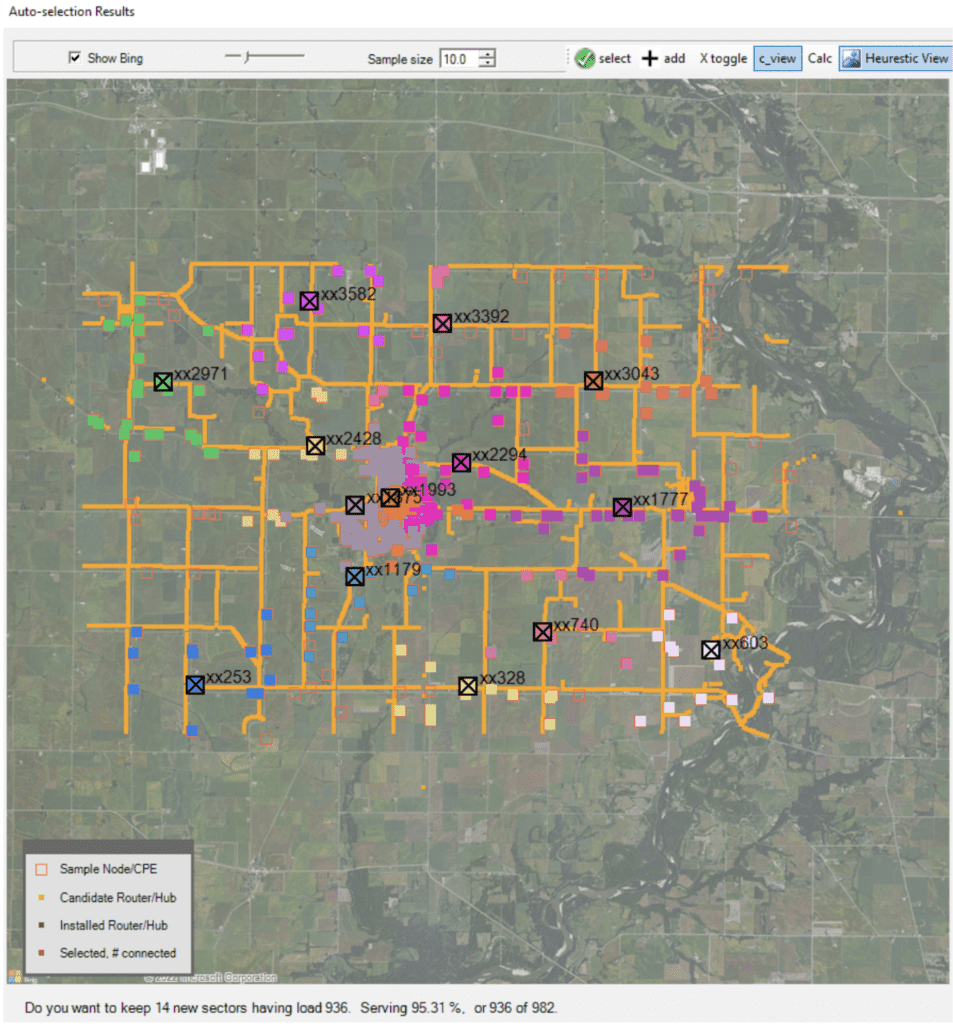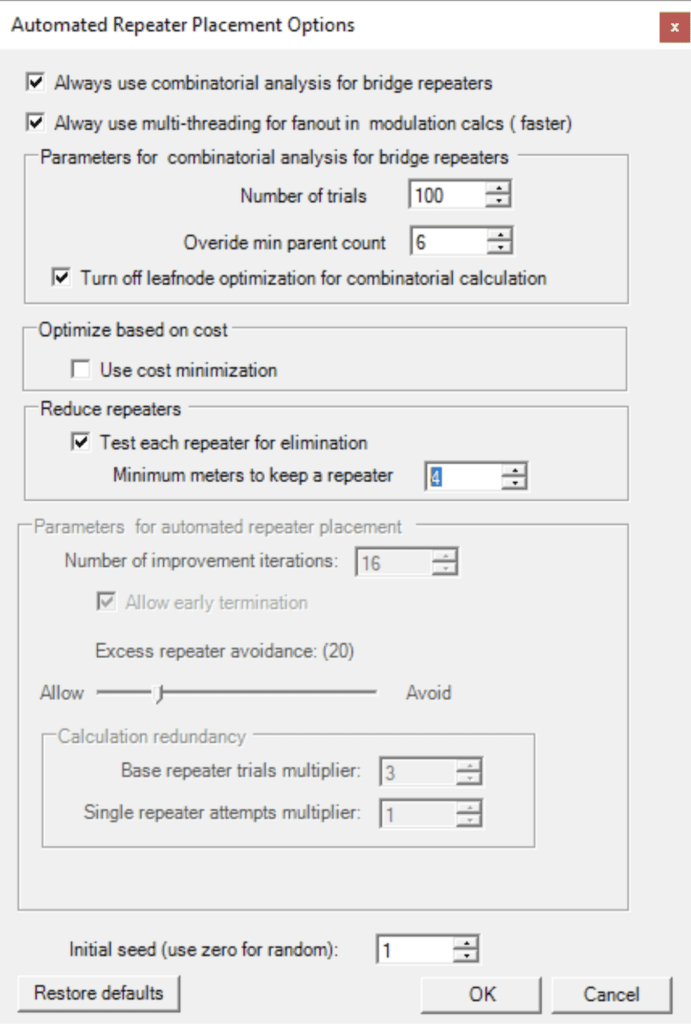Advanced Metering Infrastructure (AMI) and Smart Street Lighting networks are complex systems that require detailed planning in order to determine the site/equipment placement and configuration that will ensure a redundant and scalable network. Because these networks can be deployed on a city/region-wide scale consisting of many thousands or even millions of devices, over-building a network can have huge economic impact.
One of the challenges in designing these networks is the difficulty of balancing the need for coverage and redundancy that meet the design criteria against the need for a cost-effective network. The cost to deploy gateways or repeaters on different locations varies greatly depending on the type of pole or tower asset. Deploying gateways on street-lights or utility poles may be less expensive if they’re owned by the network operator, but the additional coverage offered by cell tower sites may offset their extra cost. Even if the entire network is to be built on operator-owned pole assets, there may be significant differences in deployment costs for different types of poles within the network area. Choosing where to build backhaul sites and repeaters quickly becomes a complex problem involving the device capacity, costs, and the RF coverage that will be achievable from each site. For large networks it’s impractical to evaluate the coverage of each site location individually and then try to design a mesh network that meets these competing requirements by hand.
EDX’s Mesh Network Module includes a comprehensive set of features to tackle this design challenge for any type of mesh network including heterogeneous networks with embedded point-to-multipoint “lead nodes,” adaptive modulation broadband solutions, and Smart Cities solutions of all kinds.
Automatic capacity and cost-aware gateway placement
The first stage in designing a mesh network is usually to locate the gateway or backhaul sites. There needs to be enough gateway sites to ensure enough capacity for the number and types of end-points being served, and those sites may all have different deployment costs associated with them. The Automatic Router Planning features within EDX’s MegaMesh toolset is able to pre-analyze the mesh possibilities within the existing set of end-points, predict the coverage of each candidate gateway site, and then suggest a collection of gateways to serve the end-points that balances site cost against capacity and coverage constraints for a “best bottom-line” solution. You can then modify the proposed solution to add or remove sites, if desired.


It’s often desirable at this stage to create a gateway placement that covers less than 100% of end-points in the network. Repeater nodes are generally less expensive than gateways, so it can be a cost-effective strategy to use repeaters to enhance coverage and connectivity for the last 10% – 20% of the most difficult-to-reach end-points. The MegaMesh toolset offers an automatic solution for that repeater placement process as well.
Efficient repeater node placement
Once gateway locations have been established, SignalPro can show a mesh prediction and topology report to show which end-points are connected (and at what speed, if using adaptive modulation) and also identify potential vulnerabilities in the mesh redundancy. Using the Automatic Repeater Placement function you can input a list of candidate locations and their relative costs for repeater nodes. The cost-aware repeater placement function can select where to put repeater devices based on whether a repeater at that location would serve enough previously unconnected end-points to offset its cost. If the network design is targeting 100% connectivity, the cost evaluation can be turned off so that it will select every useful repeater location.

Efficient planning solutions for every stage of network design
Whether you’re evaluating a network area for an initial dimensioning estimate on a green-field deployment or expanding and densifying an existing network, the MegaMesh toolset includes the right features and options to ensure a cost-effective network plan. The automatic site placement features can be configured to leave existing sites in place so it will choose new sites that add the needed capacity and coverage to a pre-existing network.
SignalPro includes user-adjustable propagation models for any phase of design, frequency band, and technology. Those propagation models can be used to evaluate candidate site coverage so that in the case of a new deployment you can use industry-standard empirical models like the 3GPP Empirical 5G or Hata-type models. Then, once the design is past the RFP/dimensioning stage, it’s advisable for most networks to use high-resolution terrain, clutter, and clutter height data in evaluating potential site coverage. The MegaMesh studies and design tools can be configured to leverage these high-resolution datasets with our popular Anderson2D model or any of EDX’s other industry-standard propagation models so that network connectivity and performance predictions are as close to real-world performance as possible. EDX also offers a variety of global geodata options including affordable subscription models based on the project area to provide the high-resolution needed for these designs.

